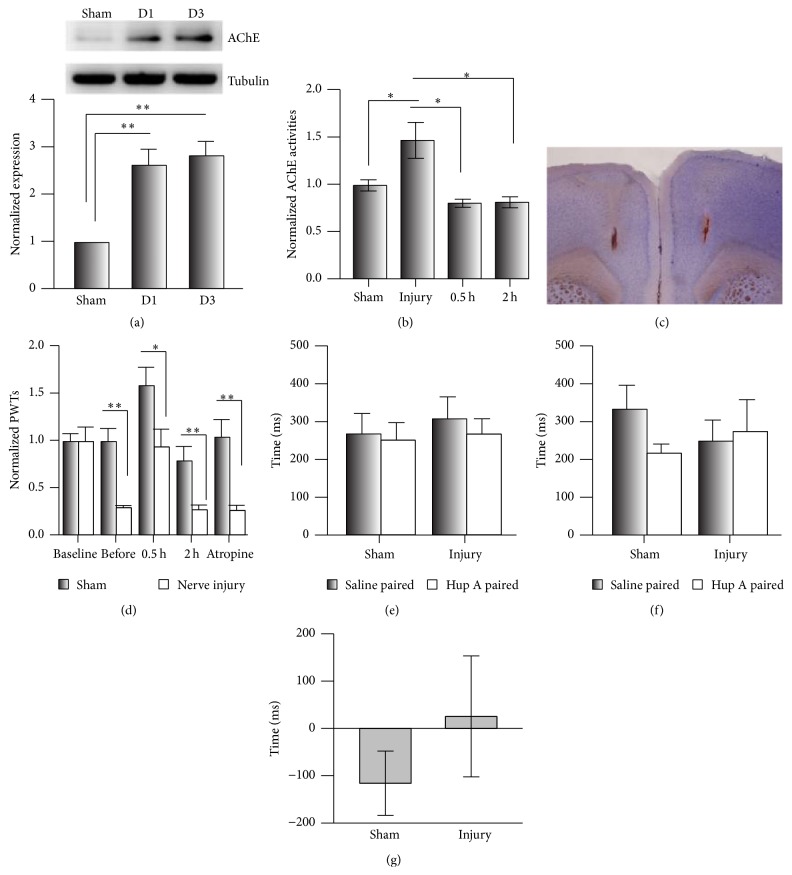Figure 4.
Infusion of Hup A into the anterior cingulate cortex did not alleviate spontaneous neuropathic pain. (a) The expression levels of AChE in the ACC were increased by the nerve injury (one-way ANOVA, F 2;14 = 14.64, P < 0.01; n = 5 per group, ∗∗ P < 0.05 under SNK test). (b) The AChE activity in the ACC of mice with nerve injury was increased, and this was inhibited by Hup A at 0.1 mg/kg, i.p. (one-way ANOVA, F 3;26 = 5.81, P < 0.01; n = 10 for sham group, n = 9 for injury, n = 4 for 0.5 h group and 2 h group, ∗ P < 0.05 under SNK test). (c) An example showing the injection site in the ACC of hematoxylin and eosin stained brain section. (d) Infusion of Hup A into the ACC increased PWTs in the sham and nerve-injury groups, and atropine blocked this analgesic effect (two-way RM ANOVA, sham versus injury: F 1;49 = 14.89, P < 0.01; treatments: F 4;49 = 15.93, P < 0.01, n = 5 per group, ∗∗ P < 0.01 under Tukey's test). (e) Time spent in the chambers during the preconditioning period of the CPP test (two-way RM ANOVA, sham versus injury: F 1;15 = 0.39, P > 0.05; saline versus drug: F 1;15 = 0.27, P > 0.05, n = 4 per group). (f) Infusion of Hup A into the ACC did not induce a preference for the drug-paired chamber in the CPP test (two-way RM ANOVA, sham versus injury: F 1;15 = 0.09, P > 0.05; saline versus drug: F 1;15 = 0.40, P > 0.05, n = 4 per group). (g) No change occurred in the preference time induced by Hup A in the CPP (t-test, P > 0.05).

